
June 2019
CBVE Milestones Published by AAVMC: Completes the Trilogy
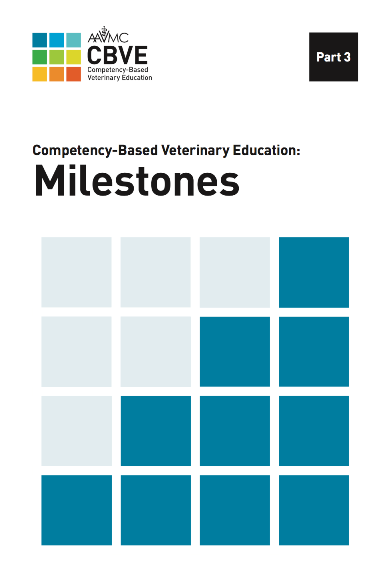 The AAVMC’s Competency-Based Veterinary Education (CBVE) Working Group has completed work on the third major component of the CBVE program. “Competency-Based Veterinary Education: Milestones” is a 48-page booklet that provides structural guidance on assessing student development and progress as part of the program.
The AAVMC’s Competency-Based Veterinary Education (CBVE) Working Group has completed work on the third major component of the CBVE program. “Competency-Based Veterinary Education: Milestones” is a 48-page booklet that provides structural guidance on assessing student development and progress as part of the program.The milestones enable educators to “operationalize” the CBVE taxonomy and classify where students are as they progress along a continuum of professional skill levels and core competencies. Four levels of milestones (novice, advanced beginner, competent, and proficient) have been developed for each of the 32 competencies defined in the CBVE framework.
Milestones enable instructors to assess learner achievement in specific competencies within the context of an Entrustable Professional Activity (EPA).
The publication of the Milestones represents the completion of three major components of a massive four-year project undertaken by the CBVE Working Group under the auspices of the AAVMC.
Since the CBVE program was introduced in 2018, many AAVMC member institutions, as well as colleges and schools around the world, have consulted or embraced the framework as they considered strategies for refining or redesigning their professional curricula. CBVE leaders have spoken about the project at educational meetings and conferences held around the world.
“Preparing future generations of highly qualified veterinary medical practitioners is our most fundamental responsibility as educators,” said AAVMC CEO Dr. Andrew T. Maccabe in remarks expressing gratitude to the working group in the publication’s forward. “It is an obligation we approach with a deep commitment to continuous improvement.”
The CBVE Working Group was co-chaired by Dr. Laura Molgaard of the University of Minnesota and Dr. Jennie Hodgson of the Virginia Maryland College of Veterinary Medicine. Members include Dr. Harold Bok, Utrecht University; Dr. Kristin Chaney, Texas A&M University; Dr. Jared Danielson, Iowa State University; Dr. Jan Ilkiw, University of California – Davis; Dr. Susan Matthew, Washington State University; Dr. Stephen May, Royal Veterinary College; Dr. Emma Read, University of Calgary; Dr. Bonnie Rush, Kansas State University; and Dr. Kathy Salisbury, Purdue University.
“The CBVE project is the most substantial pedagogical project ever undertaken by the AAVMC, and we remain profoundly grateful to the members of the CBVE Working Group for investing the enormous amount of time and energy they have in producing this body of work,” said Maccabe. “We are also grateful to the legions of professionals who have collaborated with the authors on this multi-phased project and provided important feedback.”
AAVMC’s Strategic Planning Program Underway
 Progress continues on a new strategic planning program that will guide AAVMC programs and operations over the next three years (2020-2023).
Progress continues on a new strategic planning program that will guide AAVMC programs and operations over the next three years (2020-2023).
The year-long project is engaging the board of directors, staff members and volunteers in a series of exercises designed to assess the operating environment for academic veterinary medicine and chart a pathway for the strategic success of the organization.
As part of the process, seven working groups have been created and tasked with the creation of producing concept papers that will explore challenges and opportunities in key areas of academic veterinary medicine. These include:
- Advocacy and communication: Scale and scope of an enlarged global advocacy and communications program and strategies for leveraging modest resources to achieve maximum results.
- Cost of education: Partnering with member institutions to consider strategies for reducing the cost of providing veterinary medical education, thereby increasing the financial sustainability of our member institutions and the profession.
- Changing educational model: Fostering innovation in educational models and strategies for introducing, evaluating, and implementing existing models of excellence within the academic veterinary medical community.
- Wellbeing and mental health: Identifying evidence-based developmental programs that help veterinary students, graduate students, house officers, faculty and staff thrive in their education, workplace and careers.
- Quality and quantity of the applicant pool: Strategies for ensuring the long-term quality of the applicant pool while providing an equitable admissions process.
- Faculty recruitment and leadership development: Preparing leaders at all levels for the future of academic veterinary medicine and advancing faculty recruitment and career development efforts.
- Research and scholarship: Identifying, attracting and developing future veterinary researchers and increasing public and private support to support research and discovery in academic veterinary medicine.
The facilitator is CHP Mintz, LLC, a Washington, D.C. based group that specializes in working with non-profit organizations. The company worked with the AAVMC on a strategic development initiative about a decade ago.
VMCAS Rolls Out Powerful New Analytics Program
 When recruiting and nurturing applicants to veterinary medical school, information is key. Thanks to a new analytics component of the Veterinary Medical Application Service (VMCAS), member institutions now have a powerful tool they can use to track and analyze applicant characteristics.
When recruiting and nurturing applicants to veterinary medical school, information is key. Thanks to a new analytics component of the Veterinary Medical Application Service (VMCAS), member institutions now have a powerful tool they can use to track and analyze applicant characteristics.
The feature enables admissions personnel to view a graphical representation of VMCAS data in real time, compare cohorts against national applicant data, compare current data against former cycle data, and examine graphical heat maps of where applicants are coming from on an international basis.
“By providing more detailed analytics and easy-to-share graphics, the AAVMC aims to equip our members with up-to-date information they can use to inform strategy, pinpoint any potential problems and be as responsive as possible to applicants,” said Tony Wynne, the AAVMC’s director of admissions and recruitment affairs.
Associate Professor Dr. Jacque Pelzer, director of admissions and student support at the Virginia-Maryland College of Veterinary Medicine, said that these new features will provide practical benefits.
“The tool will give CVMs a real-time snapshot of our applicant pool throughout the cycle, which allows us to better engage our pool and help nurture those that might need a little hand-holding,” she said. “Graphical views into our pool give us a broader overview of the pool and provides multiple cycle comparisons to see where we are at any given month and day compared to the prior cycle.”
Pelzer also appreciates the program’s relative cohort report which shows each CVM where their numbers are compared to all the other veterinary schools.
“The program enables us to easily present a graphic representation of our pool without having to export and create our own graphics and provides a better glimpse into where their applicants are coming from by country, state and even county,” she said.
The analytics tool recently rolled out to schools and training will begin soon.
AAVMC Financial Support Available for Member Institution Faculty & Staff to Attend Purdue D&I Program
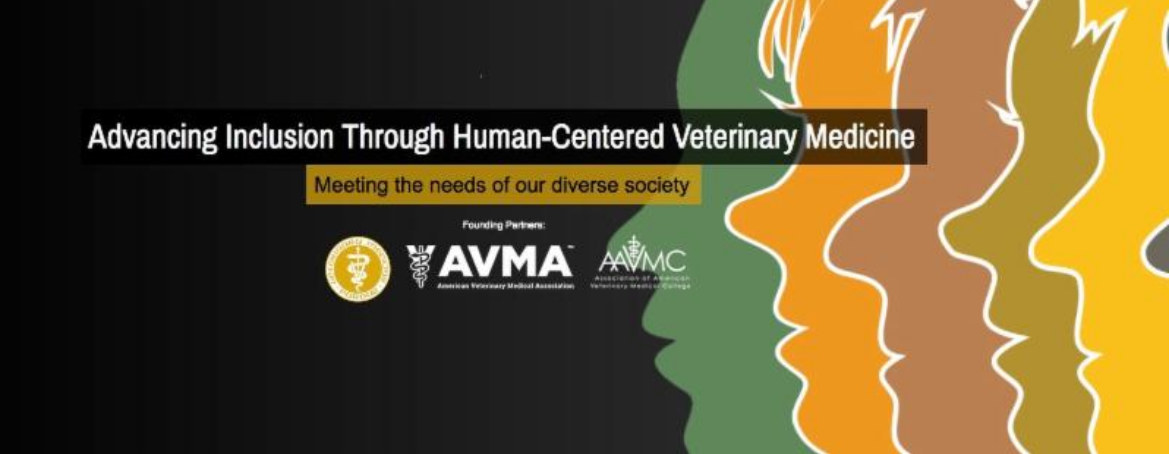
AAVMC member institution faculty and staff interested in participating in the Purdue University Center of Excellence for Diversity and Inclusion in Veterinary Medicine’s professional certificate program can receive funding support from the AAVMC.
The AAVMC will match one combined $500 registration fee for one faculty member and one staff member at each AAVMC member institution, thereby doubling the number of personnel from each school or college that can participate in the program.
Purdue’s Center of Excellence offers a series of independent certificate programs in Diversity and Inclusion that are specially created for faculty and faculty administrators; interns, residents, and non-faculty educators; staff; students; and veterinarians and veterinary technicians.
The Center for Excellence for Diversity and Inclusion in Veterinary Medicine was established in 2013.
The AAVMC Board of Directors approved $10,000 to help support interested faculty and staff last year, and resources remain, according to AAVMC Senior Director for Institutional Research and Diversity Dr. Lisa Greenhill.
For more information about the certificate program and how to register and obtain funding support, please click here or contact Dr. Greenhill at lgreenhill@aavmc.org.
NIAMRRE Hosts Major Development, Operations Meeting in Ames, Iowa
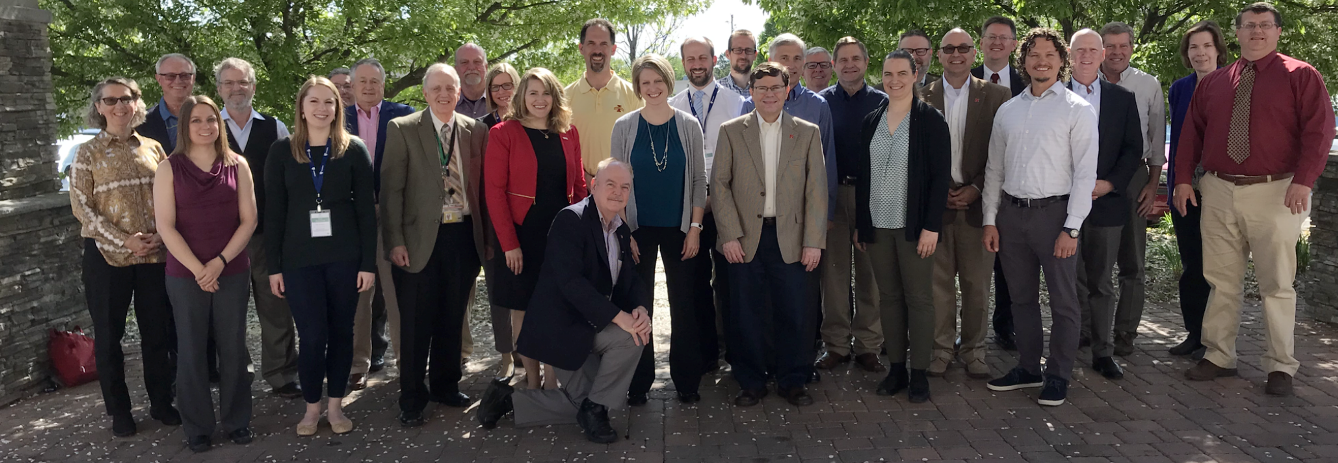
About 30 stakeholders and organizational leaders representing universities, associations and institutes involved with the antimicrobial resistance issue (AMR) attended a major developmental meeting for the National Institute of Antimicrobial Resistance Research and Education (NIAMRRE) in Ames, Iowa from May 14-16.
The goal of the meeting was to build understanding and consensus for NIAMRRE’s mission, vision, strategy, goals, organizational structure, and membership.
The group discussed a variety of structural and operational issues, including the need to position the organization as an active change agent focusing the power of science and education to protect people and animals from the ominous threat posed by antimicrobial resistance.
Other topics discussed during the meeting included:
- Formation of diverse, cross-disciplinary research teams to conduct necessary research on the basis of need and funding opportunities.
- Better describe the educational component of their mission to clarify messaging and identify and prioritize audiences.
- Construct avenues and opportunities for collaboration between scientists working on the human and animal side of the problem.
- Developing advocacy programs to build support and identify funding to support the institute’s important work.
The group also discussed the need to shape the organizational structure in a way that maximizes efficiency, accountability and success; the need to better articulate the nature, role and responsibilities of membership in the institute; and the importance of building a broad base of awareness and support for the institute’s activities.
NIAMRRE was established at Iowa State University as the result of a joint Task Force on Antibiotic Resistance in Production Agriculture that AAVMC and APLU created in 2014. The group released a report the following year that offered an array of research and education recommendations designed to address the problem.
Iowa State is partnering with the University of Nebraska-Lincoln, the University of Nebraska Medical Center, the University of Iowa, and the Mayo Medical Clinic. The institute is also partnering with two major USDA Agricultural Research Service (ARS) facilities, as well as a collection of agricultural stakeholders representing over one-fourth of the U.S. swine and beef industry.
Kansas State University College of Veterinary Medicine’s Joe Montgomery Earns AAVMC’s 2019 Communications Excellence Award
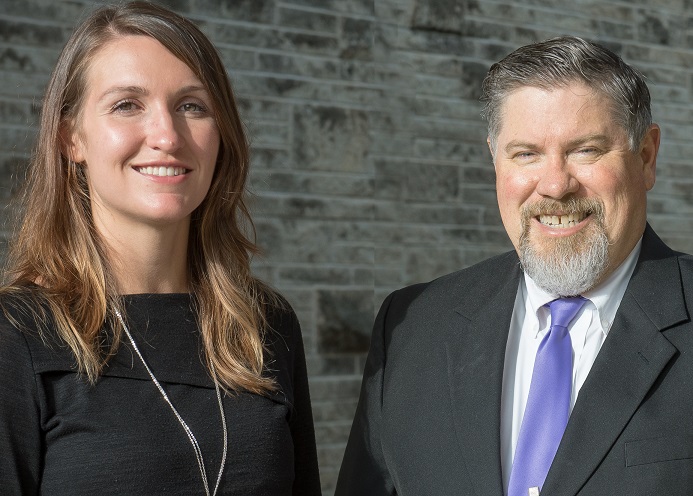
Joe Montgomery (right) and Audrey Hambright, public information officer
Kansas State’s program was praised by judges for comprehensive program excellence that advanced the college’s strategic plan.
“Communications excellence is fundamental to institutional advancement,” said AAVMC Chief Executive Officer Dr. Andrew T. Maccabe. “We congratulate our colleagues at Kansas State University for earning this distinction, and appreciate the role their work is playing in advancing the overall interests of academic veterinary medicine.”
Following the completion of a new strategic plan at the college, the communications team consolidated two magazines into a new “One-CVM” themed magazine called “Wildcat Veterinarian.” The new magazine was created to advance understanding and support for key initiatives and priorities in the strategic plan, which include building awareness for their outstanding food animal programs, as well as their responsive and collaborative research and service programs.
Judges also recognized their portfolio of communication strategies and tactics, including media relations with the veterinary and scientific trade press, broad-based and creative use of social media, strong collaboration with Hill’s Pet Nutrition in coordinating the announcement of the largest gift in the history of the college, and providing support for the Kansas State University Diagnostic Laboratory.
The judging team consisted of communication professionals representing member organizations of the Federation of Associations of Schools of the Health Professions (FASHP) in Washington, D.C. Judges scored nominations from five competing schools using an empirical process that assessed criteria such as quality and scope of the program, leadership and innovation in program development, strategic orientation and other factors.
The award includes a $1,000 honorarium, a commemorative, and public recognition. It will be formally presented during the annual meeting of the Association of Veterinary Advancement Professionals (AVAP) on Thursday, August 1 at 8 a.m. at the Courtyard Washington/Convention Center in Washington, D.C.
The AAVMC Board of Directors established the Communications Excellence Award in 2013 to recognize the important role of communications in advancing academic veterinary medicine and the profession, inspire higher level of performance and foster collaboration among member institutions.
Danielle Johnson at The Ohio State University College of Veterinary Medicine Wins Scholarship Fundraising Award
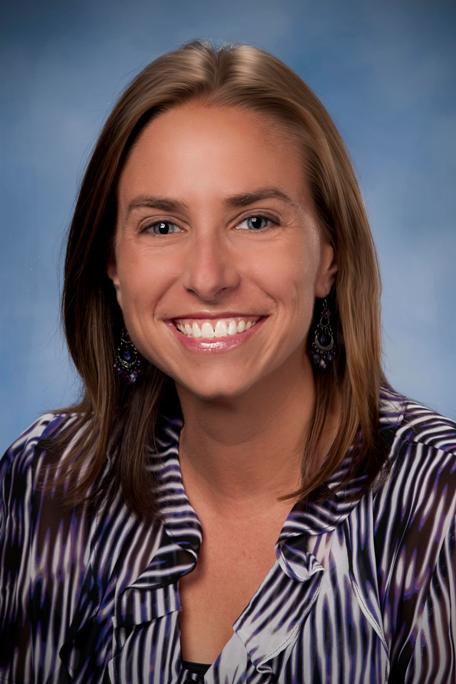
Danielle Johnson
The Ohio State University College of Veterinary Medicine’s scholarship fundraising program was recognized by judges for its strategic, comprehensive and sustainable nature, as well as programmatic success. Increasing the amount of scholarship resources available for DVM students was an important goal of the college’s Be the Model strategic plan, and a systematic program was established to acquire transformational scholarship gifts.
That resulted in a rise of total philanthropic scholarship funding from $1,978,787 in 2017 to $4,800,876 in 2018 and an average scholarship presentation of $10,400. Last year, the college awarded 38 philanthropic scholarships of $15,000 or more.
“Educational debt is one of the most challenging issues facing academic veterinary medicine and the profession,” said AAVMC Chief Executive Officer Dr. Andrew T. Maccabe. “We’re honored to congratulate Danielle and her colleagues for earning this distinction. We were also very impressed with the quality of work being accomplished by the other nominees. This competition demonstrates that many of our member institutions are focusing increased attention on this critically important area.”
The judging team consisted of three executives serving with major organizations working in higher education and the animal and global health sectors. They included Ms. Linda Durant, vice president of development for the Council for the Advancement and Support of Education (CASE); Dr. Keith Martin, executive director of the Coalition of Universities for Global Health (CUGH); and Mr. Steve Feldman, executive director of the Human-Animal Bond Research Institute (HABRI).
This year, four AAVMC member institutions participated in the competition. The award is not presented solely on the basis of the total amount of resources generated, or year-over-year increase. Judges consider criteria such as programmatic structure, new and innovative strategies, resources applied and other factors in making their decision.
The AAVMC Board of Directors created the award in 2018 to recognize exceptional performance and inspire higher levels of productivity in this area among member institutions.
The award includes a $1,000 honorarium, a commemorative, and public recognition. It will be formally presented during the annual meeting of the Association of Veterinary Advancement Professionals (AVAP) on Thursday, August 1 at 8 a.m. at the Courtyard Washington/Convention Center in Washington, D.C.
Dr. Mary Beth Davis: A Beacon of Determination and Self-Reliance
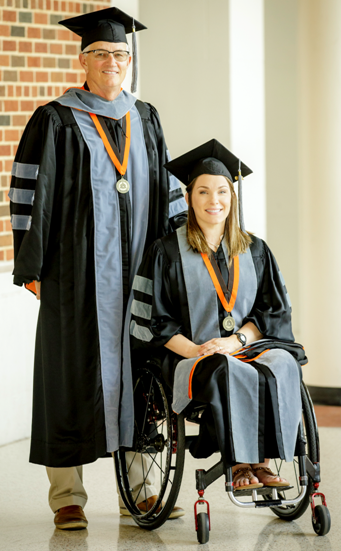 Thousands of new graduates stepped forward from AAVMC member institutions this semester to begin their DVM careers. And there’s an amazing success story behind every one. But perhaps few members of the Class of ’19 have had to summon the grit, determination and resolve to do what Dr. Mary Beth Davis did at the Oklahoma State University Center for Health Sciences. Inspired by a life-changing talk with OSU grad and veteran corporate veterinarian Dr. Rocky Bigbe (’81), and with the help of many colleagues and friends, Davis rose above a tragic setback to earn her DVM and is pursuing her goal of becoming a veterinary ophthalmologist. Said Bigbe of Davis: “She is a beautiful shining beacon of determination and self-reliance.” Read more and see a video here.
Thousands of new graduates stepped forward from AAVMC member institutions this semester to begin their DVM careers. And there’s an amazing success story behind every one. But perhaps few members of the Class of ’19 have had to summon the grit, determination and resolve to do what Dr. Mary Beth Davis did at the Oklahoma State University Center for Health Sciences. Inspired by a life-changing talk with OSU grad and veteran corporate veterinarian Dr. Rocky Bigbe (’81), and with the help of many colleagues and friends, Davis rose above a tragic setback to earn her DVM and is pursuing her goal of becoming a veterinary ophthalmologist. Said Bigbe of Davis: “She is a beautiful shining beacon of determination and self-reliance.” Read more and see a video here.Pictured left: Dr. Bigbe (left) and Dr. Davis (right)
VMLRPEA Bill Introduced in House: Eliminates 37% Tax Penalty to Increase VMLRP Program Effectiveness
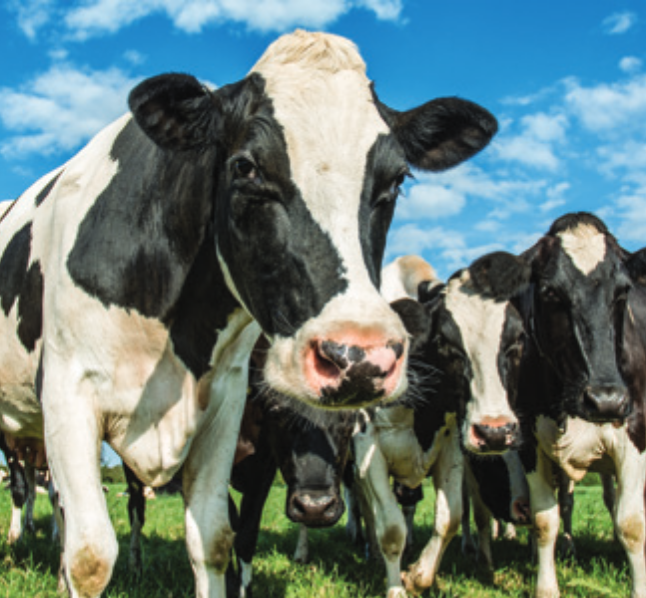 The Veterinary Medicine Loan Repayment Program Enhancement Act (VMLRPEA) has been introduced in the House of Representatives by Congressmen Ron Kind (D-Wis.), Adrian Smith (R-Neb.), Kurt Schrader (D-Ore.) and Ted Yoho (R-Fla.).
The Veterinary Medicine Loan Repayment Program Enhancement Act (VMLRPEA) has been introduced in the House of Representatives by Congressmen Ron Kind (D-Wis.), Adrian Smith (R-Neb.), Kurt Schrader (D-Ore.) and Ted Yoho (R-Fla.).
This legislation is companion to the Senate bill (S.1163) introduced in April which seeks to help relieve the shortage of veterinarians serving in rural areas of the nation by increasing the impact of the Veterinary Medicine Loan Repayment Program (VMLRP).
Many rural areas of the nation have been chronically underserved by the veterinary profession because food animal veterinary medical careers often don’t pay as well as companion animal medical careers within the profession.
This has created a critical shortage of veterinarians to serve in food animal veterinary medicine, food safety and public health positions in many rural areas. In 2019, for example, the USDA has designated 190 regions in 44 states as suffering from shortages of food animal or public health veterinarians.
Passed in 2010, the VMLRP provides educational loan forgiveness that incentivizes veterinarians to serve in these USDA designated shortage areas for at least three years. However, the impact of the VMLRP has been constrained by a provision in the law that exacts a 37% withholding tax on VMLRP awards.
The Veterinary Medicine Loan Repayment Program Enhancement Act will end the 37% withholding tax, which will increase VMLRP program effectiveness without requiring additional federal government funding for the program.
To view a detailed information sheet produced by the AVMA on this legislation, please click here. For more information, please contact Kevin Cain at kcain@aavmc.org.
World Organization for Animal Health Strengthens Veterinary Services Program
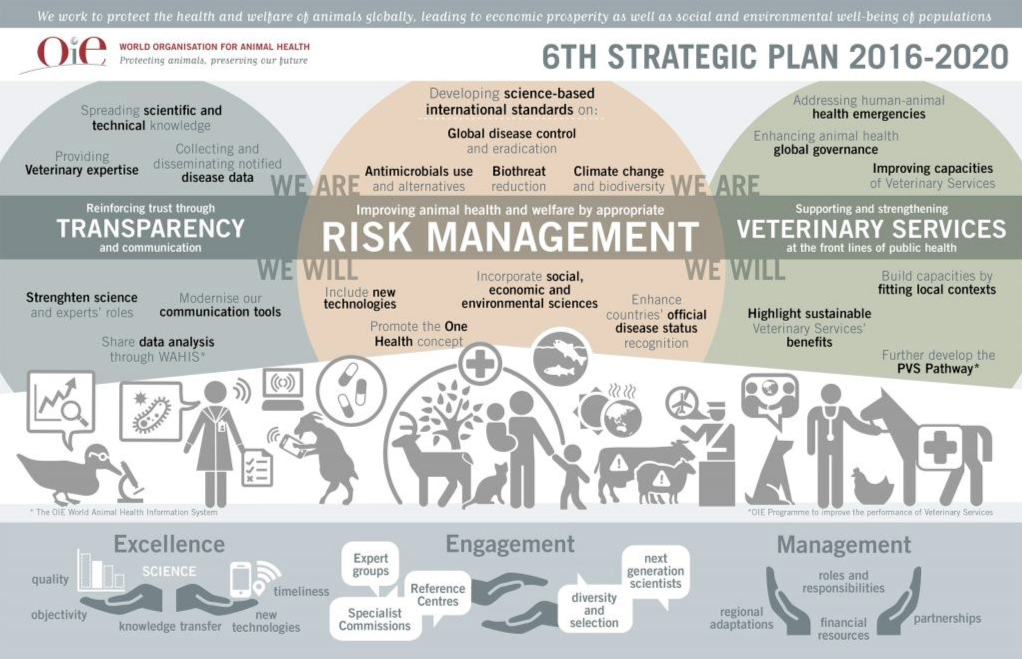
Infographic from OIE website
The Paris-based OIE – World Organization for Animal Health has recently strengthened its program for improving the performance of veterinary services. With origins dating back to the 1924 creation of the Office International des Epizooties (OIE), the organization was renamed the World Organization for Animal Health in 2003 and now includes 182 member-states. Its original mission to control epizootic disease remains a mainstay, although it has broadened its programs throughout almost a century of service to include food safety and production, animal welfare, the promotion of veterinary services worldwide and more. Click here to see a video and read more about what the OIE is doing to strengthen international veterinary medicine.
Seven Member Institutions, 20 Student Cohort Participating in 2019 Veterinary Entrepreneurship Academy
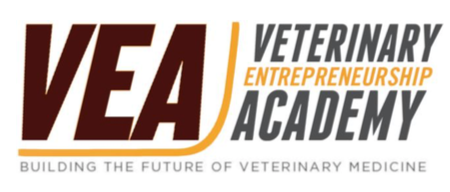 This summer 20 students from seven different AAVMC institutions will participate in a novel 10-week program designed to spark innovation and entrepreneurship in the profession of veterinary medicine.
This summer 20 students from seven different AAVMC institutions will participate in a novel 10-week program designed to spark innovation and entrepreneurship in the profession of veterinary medicine.
Organized by the Veterinary Entrepreneurship Academy, an emerging organization with roots at Texas A&M University, the students will be paired with 16 different entrepreneurial start-up companies during the summer program.
During a structured 10-week program mediated by VEA faculty, a veterinary student works closely with a start-up company innovating in the veterinary medical space. The students add value by providing knowledge and insight about the profession to the business; the business experience sparks innovation and entrepreneurial skills within the student.
The program also includes a summer-long didactic curriculum that is structured on the Business Model Canvas (BMC). That approach focuses on nine essential areas that analyze existing business models and the creation of new ones. To view the syllabus, please click here.
AAVMC member institutions participating this year include Texas A&M University, Cornell University, the University of Georgia, the University of Florida, Lincoln Memorial University, Ontario Veterinary College, and University of Tennessee.
The VEA is currently seeking to expand its portfolio of partnering schools and colleges of veterinary medicine. The program operates on a 1:1 funding model, with a sponsoring educational institution providing a stipend for the student, and the start-up company providing an equal amount of resources for facilities, faculty support and management of the course.
VEA officials are interested in speaking with potential university partners for future collaborations. Interested schools should contact Jeremy Kenny at jkenny@cvm.tamu.edu or Robert Trimble at rob@vea.vet.
In the News
Research Confirms Man’s Best Friend Is Protecting People Against Lyme DiseaseAlbany Times Union
Georgia Veterinarians Get Their Own Show on Nat Geo Wild
Atlanta Journal Constitution
How Drinking Alcohol and Smoking Can Increase Osteoporosis Risk
Microsoft News
UC Davis PET Research to Improve Racehorse Safety and Welfare
Today’s Veterinary Practice
Why Veterinarians are at High Risk of Suicide: ‘It’s Not Just Playing with Puppies and Kittens’
Yahoo News
The Emotional Topic of Veterinary Student Selection
Today’s Veterinary Practice
Researchers, Engineering Company Aim to Save Injured Horses with Special Lift and Harness
The Chronicle Herald
Build the Texas Tech Veterinary School — Now
Texas Tribune
More than $17M in Texas Tech Vet School Funding Advances in Legislature
Lubbock Avalanche-Journal
Online Tool Helps Vet School Students Be Informed About Costs
EquiManagement
A Link Between Mitochondrial Damage and Osteoporosis
Science Daily
UGA Partnership in Pacemakers for Pooches Program
WGAU-FM
Vet: Consider Lesser-Known Parasite in Neuromuscular Disease Cases
The Horse
ASU Begins Clinical Study for Cancer-Preventing Vaccine
Veterinary Practice News
Cats Are As Smart As Dogs — They’re Just Not Participating In Experiments, According To Studies
Bustle
WSU Begins Construction of Elk Hoof Disease Research Facility
Moscow Pullman Daily News
Lincoln Memorial Expands Veterinary Facilities
Today’s Veterinary Business
People In Iowa Are Getting Sick. Looks Like Dogs Are The Culprit
Express Newsline
AAVMC Offers New Version of Cost Comparison Tool
BEEF Magazine
Farmers Refusing to Take on ‘Snowflake’ Vet Students
Farming Independent
Penn Vet and the Wharton School Launching New Veterinary Entrepreneurship
Program Times Union
4 Ways to Make Sure Your Pet Survives Tornadoes, Wildfires, Hurricanes and Other Disasters
USA Today
Why More Veterinarians are Using Sedation Before Euthanasia
KREM News
Boehringer Ingelheim & HVRI Set Up ‘Industry-Academia-Research’ Exchange Platform
Pharmabiz
National Geographic Television Show ‘The Hot Zone’ Features KU, K-State Connections
Lawrence Journal-World
Impact of Service Dogs
Fox 7
Ohio State Opens Expanded Veterinary Oncology Suite
Veterinary Practice News
Three Biggest Threats to Dog Welfare Revealed
Vet Times
Pipelines and Pathways
Today’s Veterinary Business
UC Davis Repairs Dog Bones with Protein from Human Medicine
dvm360
From Our Members
Secretary of Agriculture Sonny Perdue Cuts Ribbon on LMU’s College of Veterinary Medicine BuildingLincoln Memorial University
Getting a Handle on Canine Epilepsy
Tufts University
Preparing Future Faculty Program at MSU Helps Graduate Students Prepare for Careers in Academia
Mississippi State
A Potential Game Changer for Pets with Diabetes
Tufts University
Veterinary Biobank is First Accredited Under New Standard
Cornell University
Meet Dr Shokry & Toxic Plant Garden
Ross University
Equine Therapy Helps Dementia Patients
UC Davis
Model Identifies High-Risk Areas for Lumpy Skin Disease in Cattle
NC State
New Institute at U of G will Focus on One Health
University of Guelph
People in Motion
Dr. Bonnie Rush has been selected as the new dean of the College of Veterinary Medicine at Kansas State University. Dr. Rush as been serving as interim dean since 2017. Her appointment begins June 16.“Like” us on Facebook or follow us on Twitter:




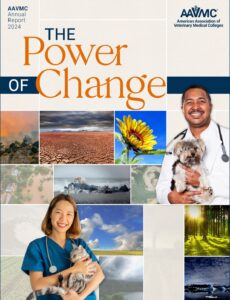
SHARE